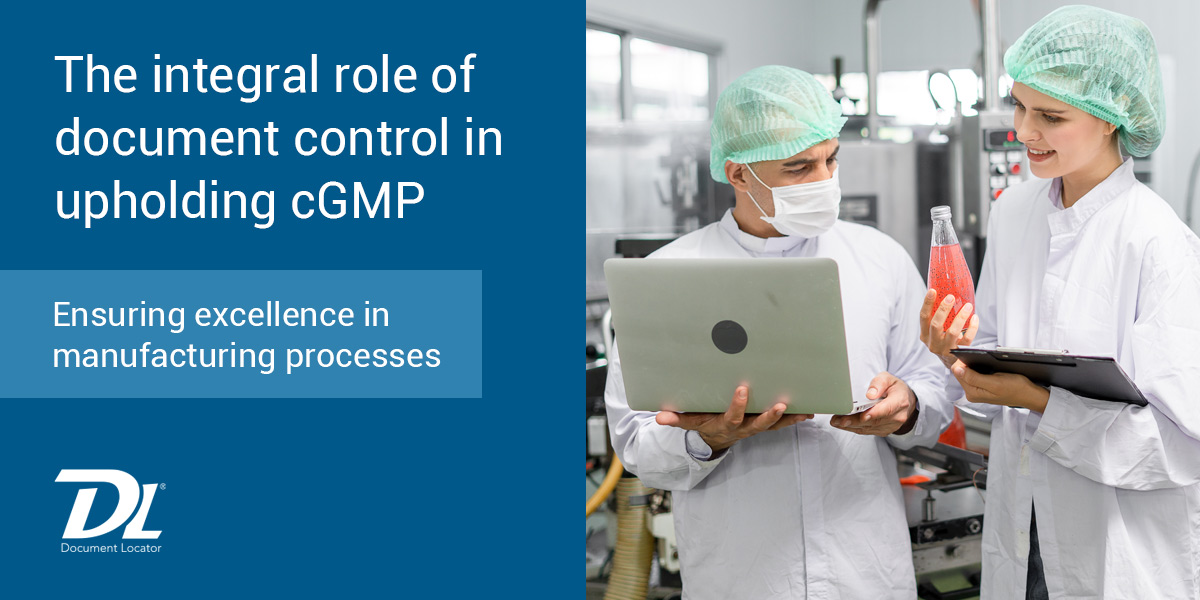In the regulated world of manufacturing, particularly within sectors that are subject to stringent standards like pharmaceuticals, medical devices, and food production, the term ‘cGMP’ resonates with an unfailing significance. cGMP, or current Good Manufacturing Practices, represents the cornerstone of quality assurance, outlining the practices required to conform to the regulatory standards that control the manufacture and sale of such products. As a document controller entrenched in this meticulous landscape knows well, areas of responsibility transcend mere paperwork management and play a critical role in compliance, quality, and ultimately, consumer safety.
The function of document control in cGMP
Document control, at its core, is the systematic management of documents, including their creation, review, modification, distribution, retrieval, and destruction. In the context of cGMP, this discipline assumes an even greater significance. Every aspect of manufacturing, from the procurement of raw materials to the shipment of finished products, must be executed as per predefined procedures to ensure product quality and safety. Here’s how document control functions as the backbone of cGMP:
- Ensuring Consistency and Traceability
By maintaining a meticulous record of all documents, including SOPs (Standard Operating Procedures), work instructions, and quality records, it helps ensure that every action taken in the manufacturing process is consistent and traceable. This not only aids in maintaining quality standards but also facilitates audits, demonstrating compliance with cGMP guidelines. - Revision Control and Accessibility
In the dynamic environment of manufacturing, procedures and policies are subject to revisions to improve efficiency or comply with updated regulations. Document control ensures that only the current versions of documents are accessible to the workforce, preventing outdated practices that could compromise product quality or violate compliance. - Training and Competency
cGMP emphasizes the importance of having a trained workforce capable of performing their duties effectively. Document control supports this by managing training records and ensuring that employees have access to the latest SOPs and work instructions relevant to their roles. This ensures that all team members are not just competent but also aligned with the current best practices. - Audit Readiness
Regular audits are a reality of the regulated manufacturing world. Document control plays a pivotal role in audit readiness by ensuring that all necessary documentation is organized, up-to-date, and readily available. This not only includes manufacturing records but also validation, calibration, and maintenance records, which are critical for demonstrating compliance with cGMP standards. - Change Management
Changes in manufacturing processes, equipment, or materials can have significant implications for product quality. Document control is key to managing these changes effectively, ensuring that all changes are documented, reviewed, and approved as per cGMP requirements. This process helps in mitigating risks associated with changes, ensuring they are implemented in a controlled manner.
Beyond compliance: The broader implications if document control
While the primary aim of document control within a cGMP framework is to ensure compliance and product quality, its benefits extend beyond these objectives. Effective document control enhances organizational efficiency by minimizing errors and redundancies. It fosters a culture of transparency and continuous improvement, where decisions are made based on accurate, up-to-date information. Moreover, it builds trust with regulatory bodies, stakeholders, and, most importantly, customers, by demonstrating a commitment to quality and safety.




